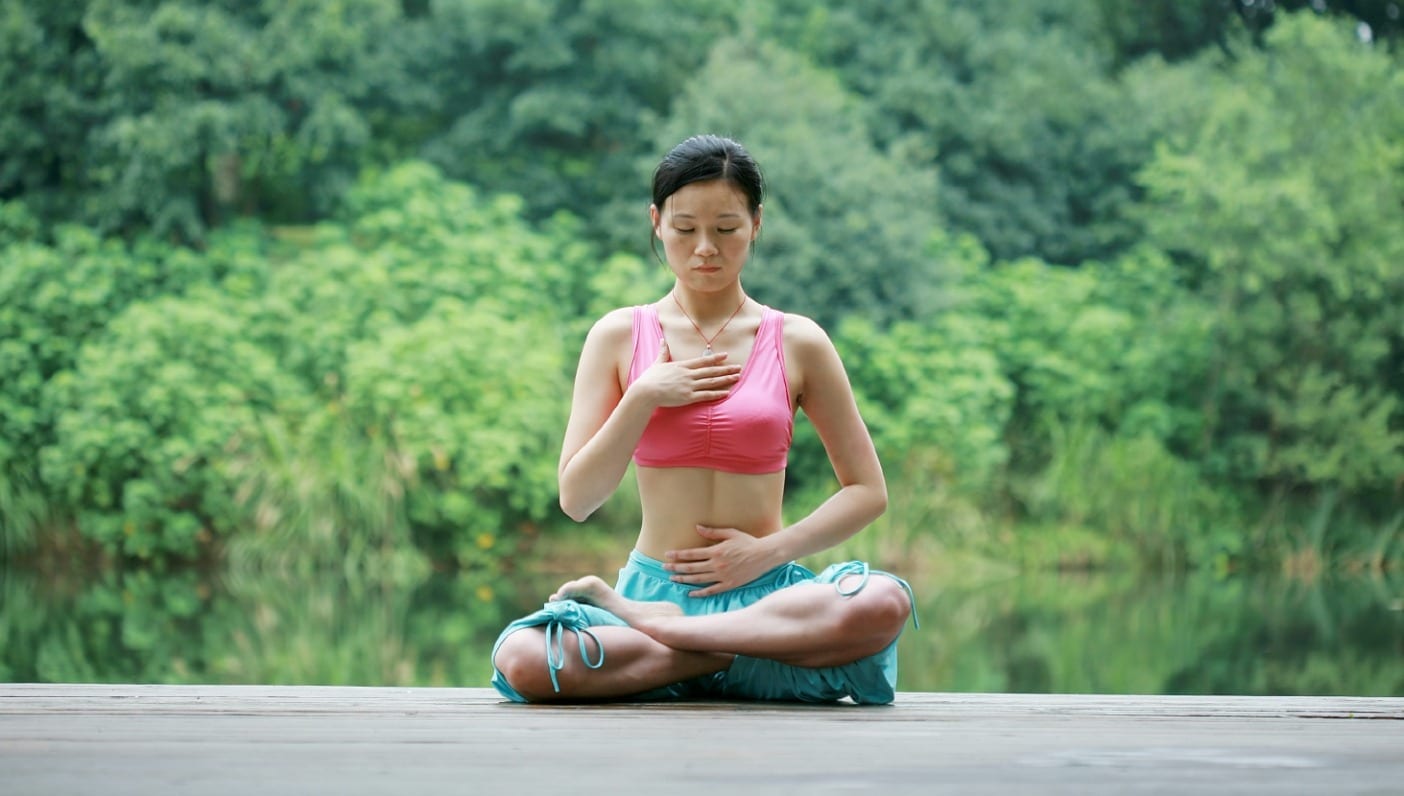
You want to make cool, new shapes? Learn to breathe.
You hear it in every yoga class: “Inhale. Exhale.” Perhaps easy in child’s pose, but connection to breath takes real concerted effort when you’re learning something new and challenging. In fact, our first natural response is to hold or shallow the breath in times of difficulty. But the moment we decrease the quality of the breath, the struggle increases. Every. Single. Time. And a strong, advanced practice relies on the basics of breath.
I have over 15 years on my mat, but over the last year, I’ve dedicated a great deal of time (and money) to advancing my asana. I’ve studied with contortionists, ashtangis, hand-balancing experts, and partner acrobats. My return on investment from these pursuits has been pretty phenomenal. As a 33-year-old woman, I’ve achieved new shapes in my body, shapes I never dreamed possible. The collection of these experiences teaches me that I can do anything—on and off the mat. Continued success and evolution, however, rides on one common, simple thread: The breath. I hear it from every single one of my teachers. “Breathe more, Lauren. Breathe more.” And whenever I do, magic happens.
The breath matters for a number of reasons, both subtle and significant. The breath is physical. You can feel it move through your body—in your belly, your ribs, and up into your chest. You can isolate the breath, and practice different pranayama techniques to control it.
On a scientific level, the breath connects directly to the central nervous system. If the breath is shallow, it contributes to an anxious state. This is why you always tell someone in a crying fit or a panic to take a deep breath. Longer, fuller breaths lead to a calm state of mind when you need to keep your cool, like when you’re doing something new and potentially scary. You can see the translation to a physical challenge, right? If you are approaching a new posture with fear in the mind and shallow breath, you’re not likely to get anywhere. You might literally struggle to move.
Consistent connection to breath will help you to stay out of the chitta, what the yogis call the mind chatter. You stay present without the natural tendency to attach to thoughts that could inhibit your range of movement. For example, if you’re working on a handstand, your mind might say, “I can’t do this. It’s too hard. I’m going to get hurt.” Sometimes, these types of thoughts are based on reason, but more often, they’re coming from a place of fear and self-imposed limits. Staying with the breath helps us observe these thoughts like a passerby. We don’t get trapped by them. We breathe beyond them, and we take the next right action.
The breath also works energetically like the waves in the ocean. Consider yourself a surfer. If you catch a swell, you ride with ease to the shore. You are energized and connected. You might be able to make the same journey with brute force, but it’s going to deplete your energy—and it doesn’t have to. The breath will get you where you’re looking to go faster, while ensuring that you feel good at the same time. This is especially true when you’re trying poses that require momentum.
Deep breathing allows you to open up to the possibilities in your body. Whether its stretching or stabilizing, if you breathe into the experience, it blossoms. You air it out and up for the taking. Once you learn how to stay close to your breath through your physical practice, you naturally begin to stay open in your life and in your relationships. You know intuitively how to breath into difficulty, and you become better able to discern which shapes in life are best to try, and which ones just won’t fit.
—
 Lauren Taus is a writer, a life coach, and a yoga instructor. She firmly believes in the mind-body connection, and in the ability for an improvement in one to benefit the other. Lauren helps her clients to develop the skills they need to make health and happiness easy in a complex world. Before building a career in wellness, Lauren worked as a hedge fund executive, and she maintains a soft spot for corporate clients. She regularly teaches at some of New York’s most elite studios including Soho House, Equinox, and Pure Yoga.
Lauren Taus is a writer, a life coach, and a yoga instructor. She firmly believes in the mind-body connection, and in the ability for an improvement in one to benefit the other. Lauren helps her clients to develop the skills they need to make health and happiness easy in a complex world. Before building a career in wellness, Lauren worked as a hedge fund executive, and she maintains a soft spot for corporate clients. She regularly teaches at some of New York’s most elite studios including Soho House, Equinox, and Pure Yoga.